Taking 2D Concept Art to 3D: a 2D Art Director and 3D Environments Designer Interview
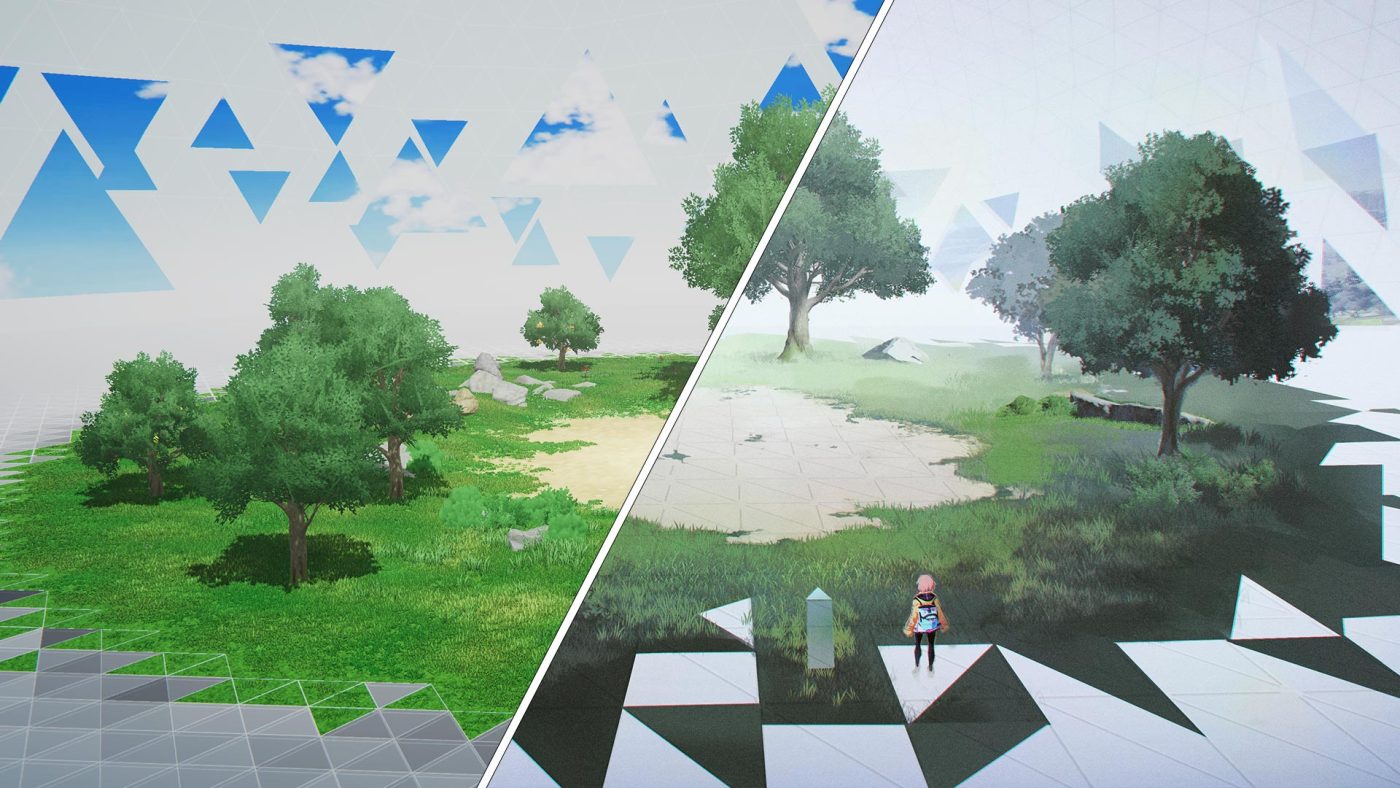
Greetings from the Holoearth Management Team!
For this edition of the development blog series we interviewed our 2D Art Director, YK-san, and 3D Environments Designer, Shimano-san.
We asked them all about the process of taking in-game areas such as the Simulation Room and Kyo-no-Miyako from the 2D concept art phase to fully-fledged 3D, what the communication process is like, and more!
|
Interviewee introduction Interviewee introduction |
First of all, please tell us about your professional history and your current roles.
YK-san (hereafter YK): Before this I worked for 8 years as a concept artist for console games. From there I joined the Holoearth development team as an art director, and I’m going onto my third year here.
I oversee the concept art designs for backgrounds, props, and other things that will be implemented in Holoearth.

 ▲Some of YK-san’s concept art
▲Some of YK-san’s concept art
Shimano-san (hereafter Shimano): Like YK I also came over from the gaming industry, where I got about 20 years of experience in console and arcade games, mobile, and even pachinko and slots, touching pretty much every genre at one point or another.
It’s just now two years since I joined the Holoearth development team. I primarily oversee specifications, production, and final quality control for in-game environments.
What was the state of Holoearth development when you first joined?
YK: I joined the company when the Holoearth project plan had just been established. The first thing shown to me was 3D models of [hololive] talents running around free Unity assets. We only had a very rough mock up of what we wanted to achieve with Holoearth, but there wasn’t yet a very concrete framework in place.
Shimano: When I first joined the 3D there essentially wasn’t yet a 3D environment team, so I was asked to be a core foundational member of the new team.
So you were involved in the planning when it was still being set up! Do you mind telling us how you are approaching your work at the moment?
YK: For starters, we receive new requests from the producer and directors. With the Simulation Room, for example, we were asked to create a gameplay area where building and crafting would be possible.
We then worked with the producer to design something that would both fit in the Holoearth setting and satisfy UX requirements, such as “when [players] cut down a tree, they will receive lumber that can be used for crafting and building.”
And the 3D team takes the concept art to work with. Is there anything you’re sure to keep in mind when creating 3D models from the concept art?
Shimano: Absolutely. On the 3D side of things, we can’t really create a world as we see fit without the original concept designs. I think that if the role of 2D artists is to take a concept from 0 to 1, the purpose of my work is to take that 1 to 100.
So we strive to reproduce the concept art as closely as possible and take it to 100 by creating scenery and small details not visible in the 2D art.
Finally, we also make adjustments to achieve a good visual balance.
 ▲YK’s concept art for the Simulation Room
▲YK’s concept art for the Simulation Room
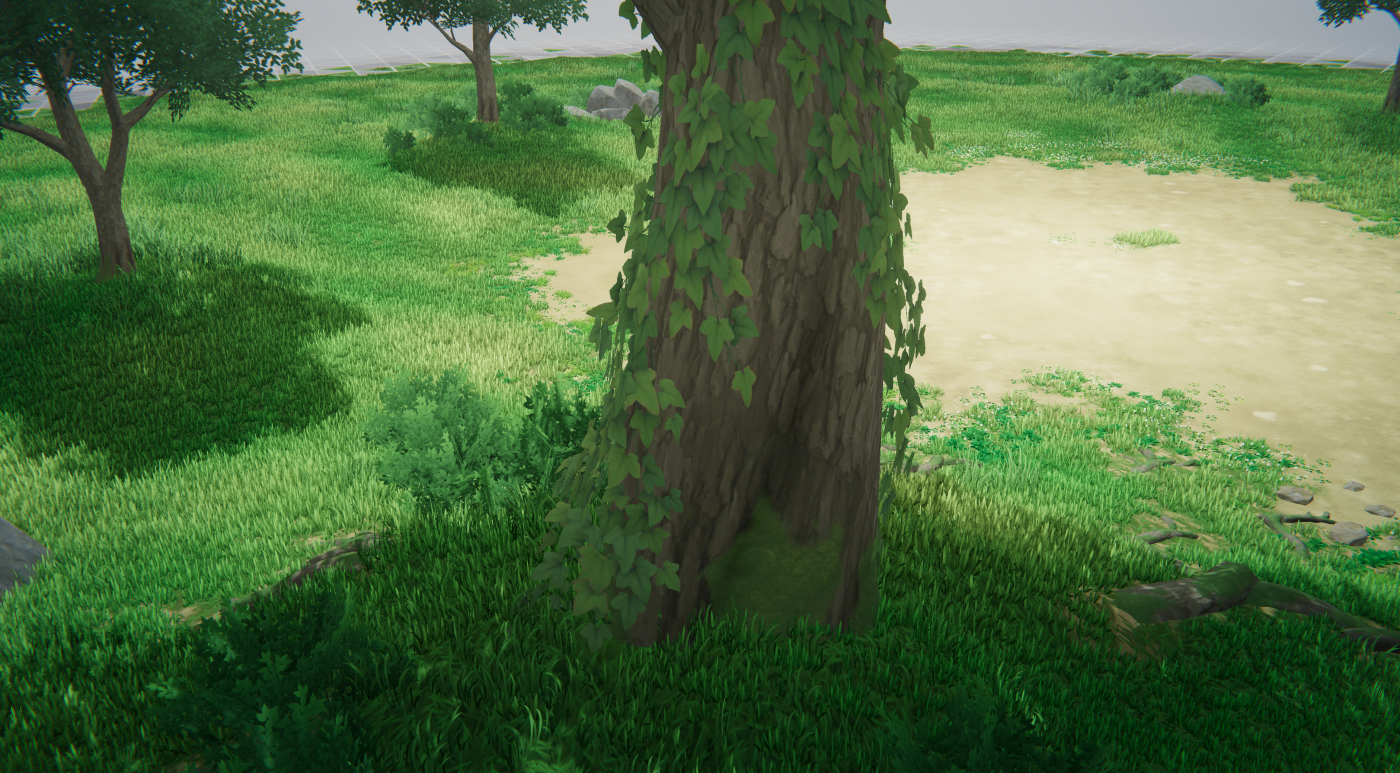 |
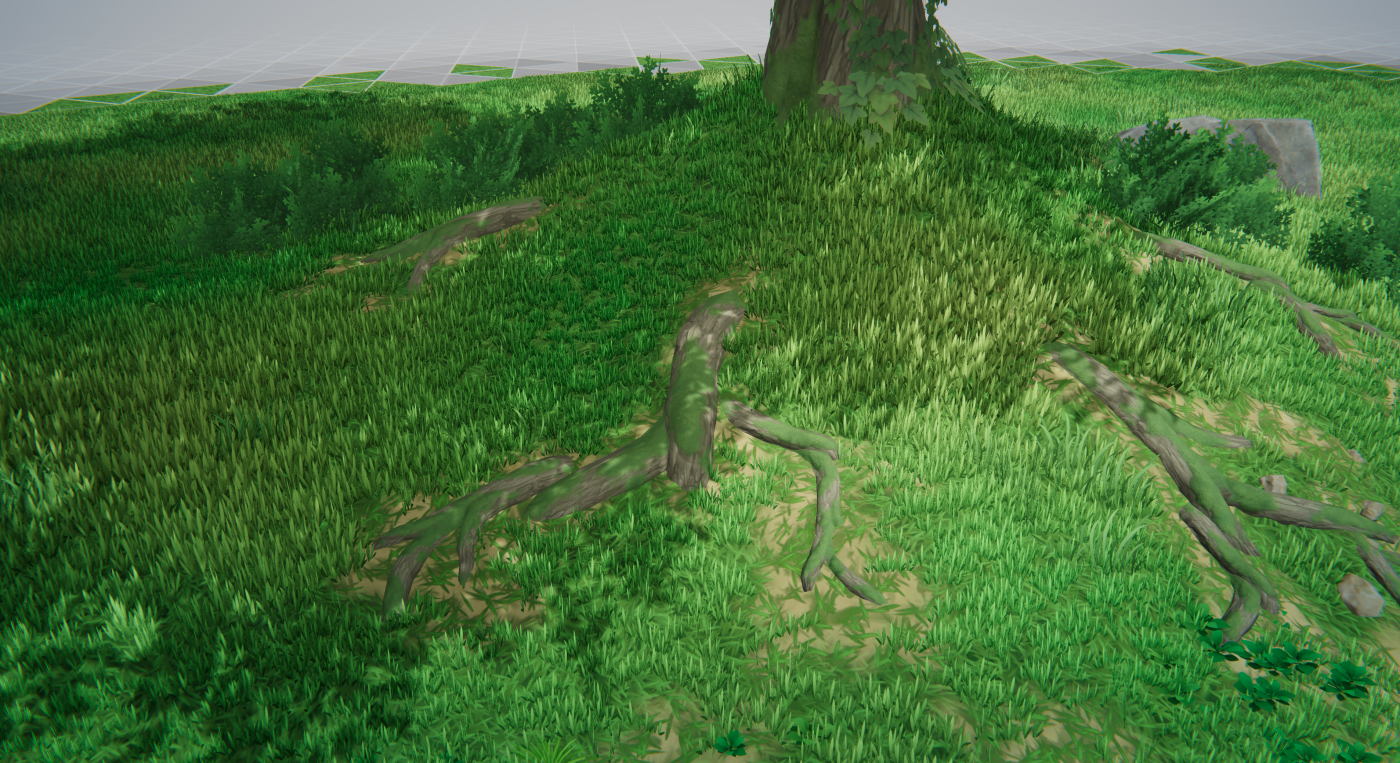 |
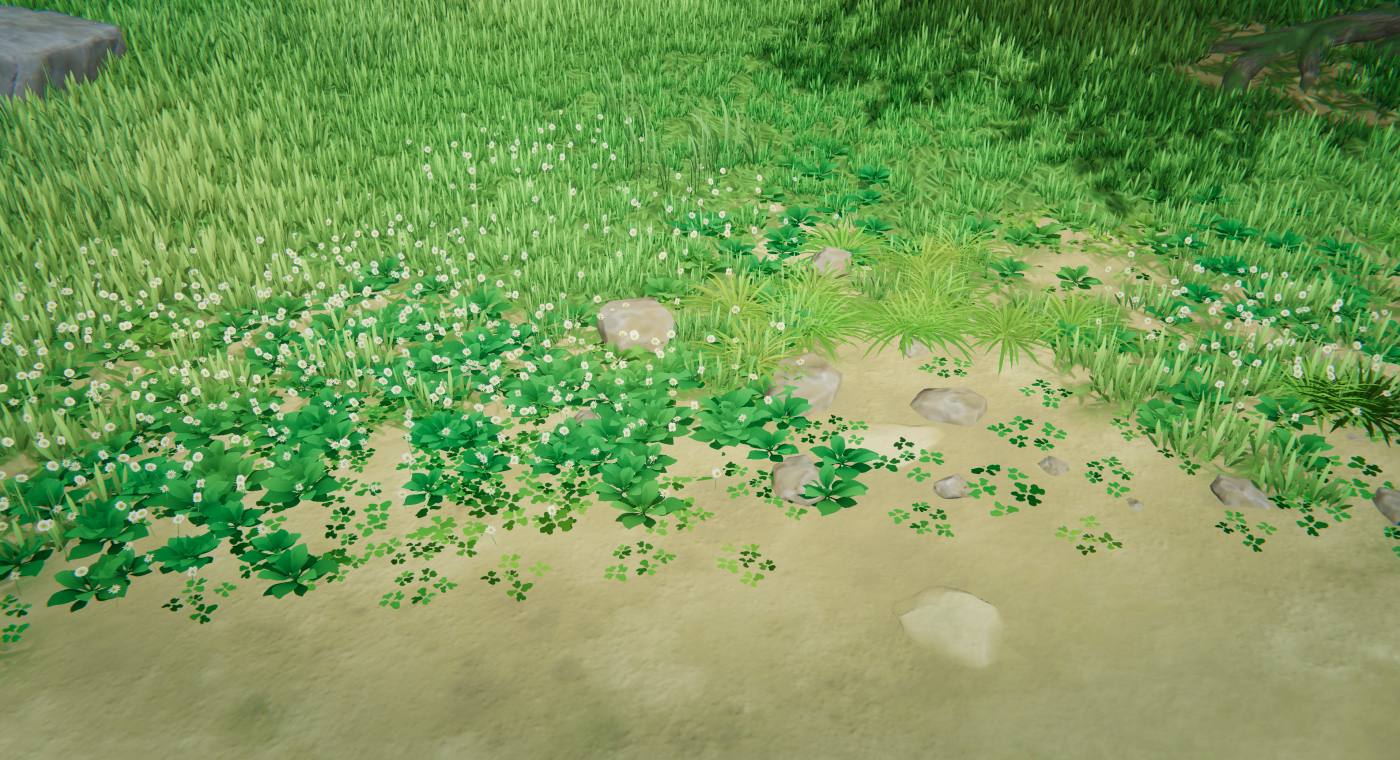 |
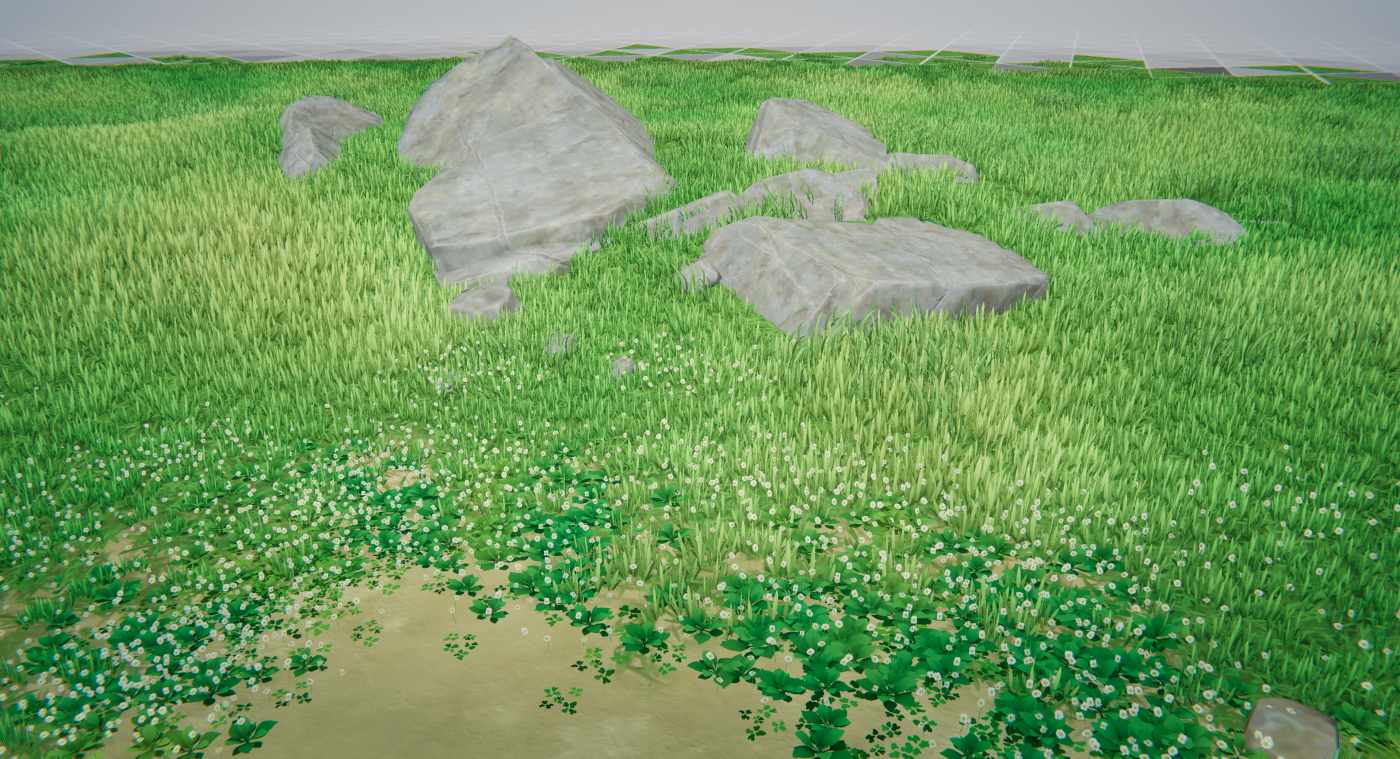 |
▲Creating the area behind the tree and small details not depicted in the concept art
Looking at the development framework it would appear like the 2D and 3D teams are working together in tandem. When the concept art is finished and passed on for 3D modeling, the two teams are still communicating closely with one another, correct?
Shimano: We simply ask [the 2D team] when we need to clarify anything. For example, when we are unsure of what kind of feel to give something we’re turning into 3D we’ll just approach YK and think together on a good workflow that includes the considerations of the 2D side and the circumstances of the 3D side.
YK: I don’t really think everything can be conveyed in 2D from the very beginning, so it’s great to be able to further express what I had in mind when creating designs through this sort of informal conversation.
Shimano: It’s good to have the artists right at hand to continue production smoothly with the final image in mind.
In this new frontier of the “metaverse,” the sentiments of the producer and directors must change quite a lot – how do you maintain flexibility in this rapidly evolving environment?
Shimano: For me, breaking things we have created is part of the creative process. It’s not “one and done,” but more a process of creating something as a launchpad for something else, and fixing it with feedback along the way.
On the other hand, the 3D team is also in charge of the final output of each design, so we have to be very conscious of deadlines.
Due to this, we are always torn between wanting to continue working on something and establishing a firm line in terms of quality in order to meet a deadline.
YK: I’ll decide what I feel must absolutely remain in the design and what has more wiggle room within the scope of the schedule so we can come to a compromise.
As the team has grown, how do you approach communication and team building with the various team members?
YK: As far as the 2D team is concerned, we haven’t established absolute requirements as such. I ask team members to decide what they want to do, and we then try to incorporate it into the design process in a way that best utilizes those ideas.
Shimano: When it comes to the 3D environments team, we divide everything into discussions about the big picture and the detailed process. For the big picture, this is all about members sharing their important values.
These are values we all share as a team: mutual respect, willingness to rebuild things, not isolating anyone, not flat out rejecting ideas.
The detailed discussions are for concretizing each member’s tasks at hand.
In making to-do lists of all the tasks that need to be done, including verbal requests, we are able to manage the process so that we don’t miss anything or take on more than we can handle, and also each task can be handled by the right person in the right place at the right time.
As a team what is on your mind as you work to create something like Holoearth that hasn’t really been seen before?
YK: This relates to what we were talking about previously, but we place full importance on the world-building and guidelines envisioned by the producer, and work to expand the values of each team member and reflect those in Holoearth as much as possible.
Incidentally, YK-san, how do you expand your worldview and update your own personal values?
YK: I’m always thinking of areas that no one has challenged and expanding my own strong points.
I like to reference things that actually exist while, say, combining A and B in such a way that no one has seen yet.
I explore combining various environments and settings each day to create something new.
I also try to keep my antennae out for environments and values that can further enhance the general setting thought of by the producer.
Shimano-san, when were your thoughts when creating the Simulation Room?
Shimano: We created the Simulation Room once YK’s concept art was released. First of all, we poured over the 2D art to make sure it could be built well in 3D by envisioning the finished 3D version. Then we saved that 3D image in our minds and began work on reconstructing it in 3D with DCC (digital content creation) tools.
In bringing something to 3D, as much as possible I want to honor YK’s original without losing anything.
Once we feel we have achieved this, we turn our attention to creating a 360° view of the environment that is not depicted in the 2D art – within budget.
 1. Concept art 1. Concept art |
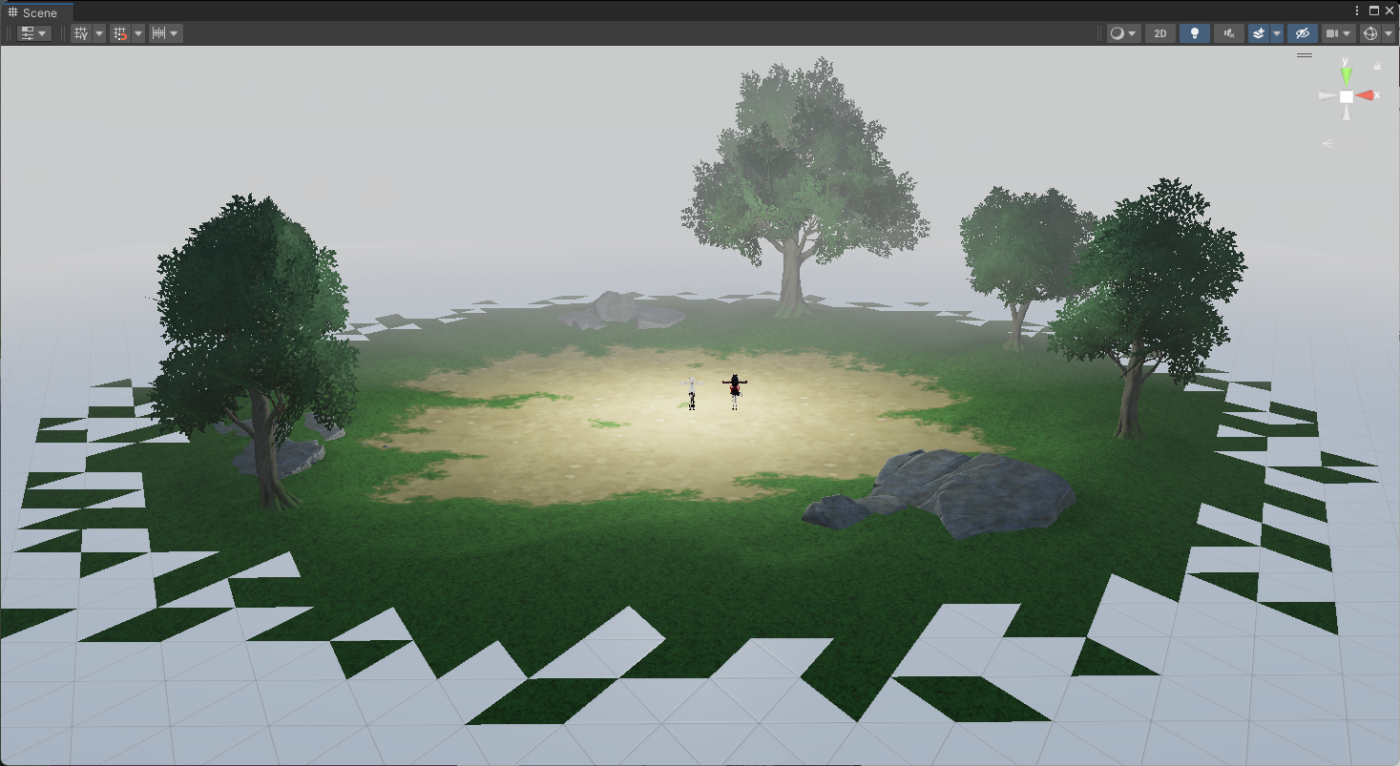 2. Modeling and overall construction phase 2. Modeling and overall construction phase |
 3. Lighting to adjust overall color and brightness 3. Lighting to adjust overall color and brightness |
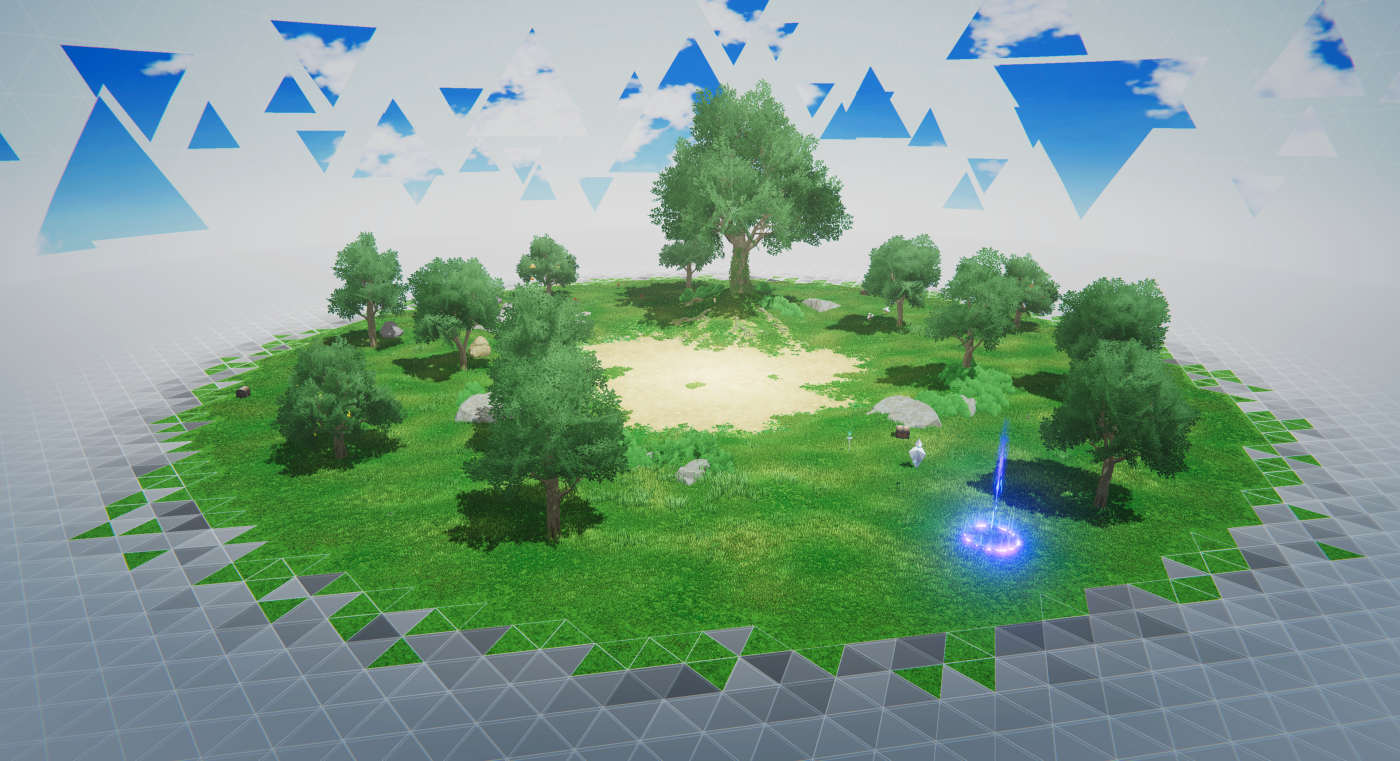 4. Completed version with surrounding areas and gameplay elements (portal) 4. Completed version with surrounding areas and gameplay elements (portal) |
Finally, we work with the technical artist (TA) to add custom shaders with movement and a distinct style to increase the graphical quality by one or two more degrees.
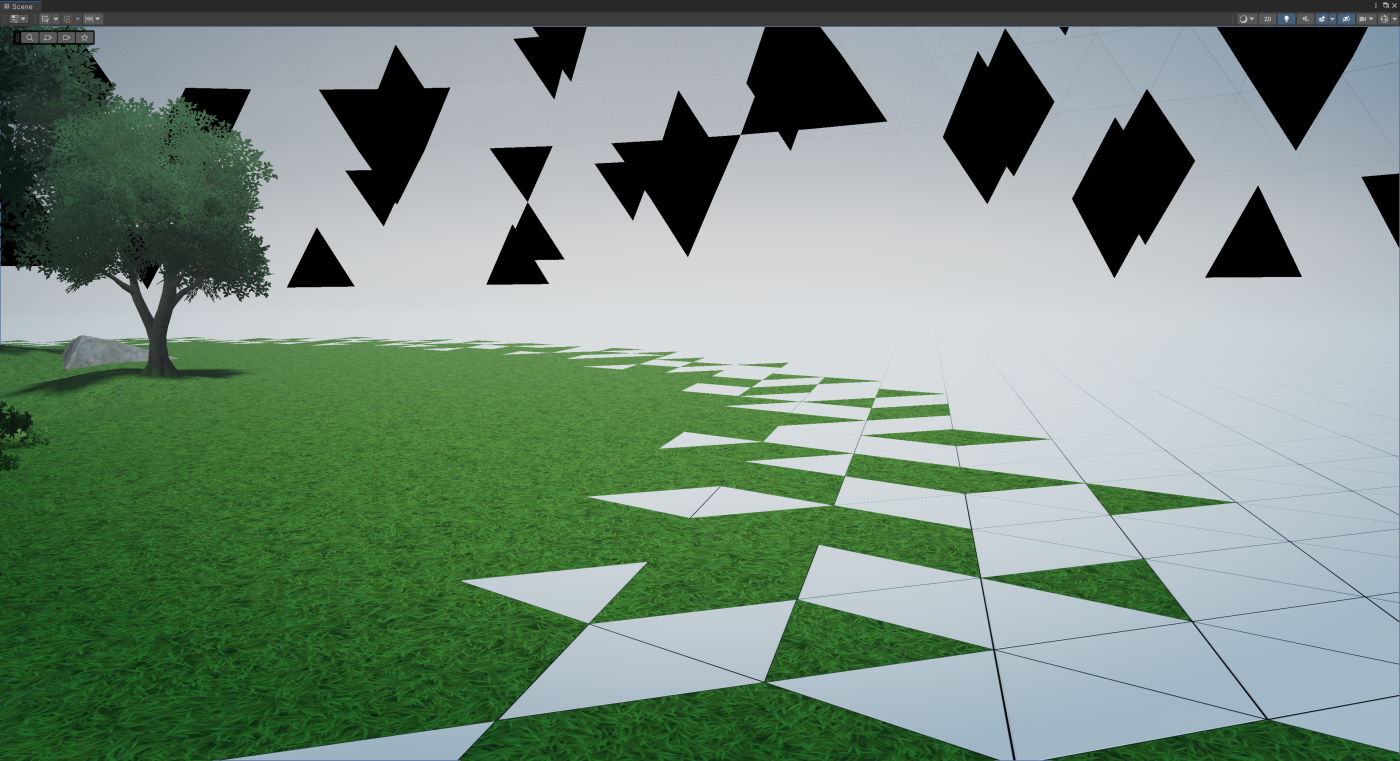 |
 |
| ▲Working with the TA, stencils and omnidirectional video were combined to create a unique parallax effect for the sky | |
There are instances where the final detailing can’t be completed with 3D models alone, so you work with the TA to achieve the final product?
Shimano: That’s right. The interesting part is, what happens is a cycle where the concept art moves to the 3D phase, the 3D team consults the TA, and the TA in turn refers back to the original art to help create the final version. That’s what I think is particularly interesting and how I know it will get even better.
Is this something you didn’t see much in development until now?
Shimano: As far as I’m aware this kind of creative environment isn’t too common. Typically, you are so busy working just to meet deadlines from start to finish.
But with Holoearth’s development, there is actually time to spend thinking about things like, “what should we do with the look of this asset?”
When it suits us we spend something like 60-70% of our work on this instead.
YK: Usually the art team doesn’t really get to be involved with anything after it goes to 3D, but with Holoearth what’s interesting is we get to have responsibility for helping supervise the final output and polishing it together.
And that’s how the Kyo-no-Miyako and Simulation Room areas came to be last year. Looking at the response from players, has anything come to your attention?
YK: I feel a lot of encouragement seeing people enjoy what we have so far despite not having a ton of content out yet.
Shimano: Seeing so many players visit the Simulation Room and Kyo-no-Miyako, running and jumping and poking around every corner, makes me really happy but also a little nervous. Those who are playing Holoearth are coming at it from both a kind but also critical perspective.
We get tons of positive comments, but also sometimes critical feedback, which we are grateful for.
So days when new content is released are the most nerve wracking but exciting moments.
 ▲Many players gathered for “hatsumode” in the New Year’s version of Kyo-no-Miyako released on Jan 1, 2024
▲Many players gathered for “hatsumode” in the New Year’s version of Kyo-no-Miyako released on Jan 1, 2024
 ▲Players sit around the kotatsu to enjoy the “holo Out, holo In 2023 ▷ 2024” stream
▲Players sit around the kotatsu to enjoy the “holo Out, holo In 2023 ▷ 2024” stream
YK: In the console world, releasing content publicly while at this stage of development isn’t really heard of.
Shimano: That’s true; this feeling of doing something to the tune of almost a live performance is quite intriguing.
You are in a spot where you can be creating and building while also being able to have back-and-forth with users at the same time.
Shimano: Also, we have a guideline from the producer where “this is something that we will continuously be creating, so the real finished product can be shown a little later,” which lends some sense of relief.
Thanks to that, we can keep our feet firmly planted on the ground and sort out what needs to be prioritized, such as whether to make this asset now or carry it over to next time, so we don’t have to make a lot of compromises to finish something if it’s not ready.
In this way, players can hopefully anticipate more improvements and growth each time.
YK: To that end, we place great importance on not betraying players’ trust as we work on development.
How about we end on what you both would like to challenge going forward.
Shimano: Just as in the beginning, I still think we cannot be 100% dependent all the time on the art team and instead we need to complement each other. If we have something that doesn’t seem like it can be designed totally from scratch, the 3D environments team would like to propose perhaps creating it in reverse and being involved with the design, when possible.
For example, the “Alternative City” we are currently making is a large city area, so it may not be possible to have the art team solely take care of every detail.
So if it is a motif that can be seen readily in the real world, such as roadside trees or plants, the environments team is gradually working to help with the design aspect as well.
I’d like to further strengthen this capability in the future.
YK: I’m always thinking about how unique the Holoearth experience is, and I hope the environments, creatures, and other aspects of the world can immerse players in an experience that can’t be had elsewhere.
